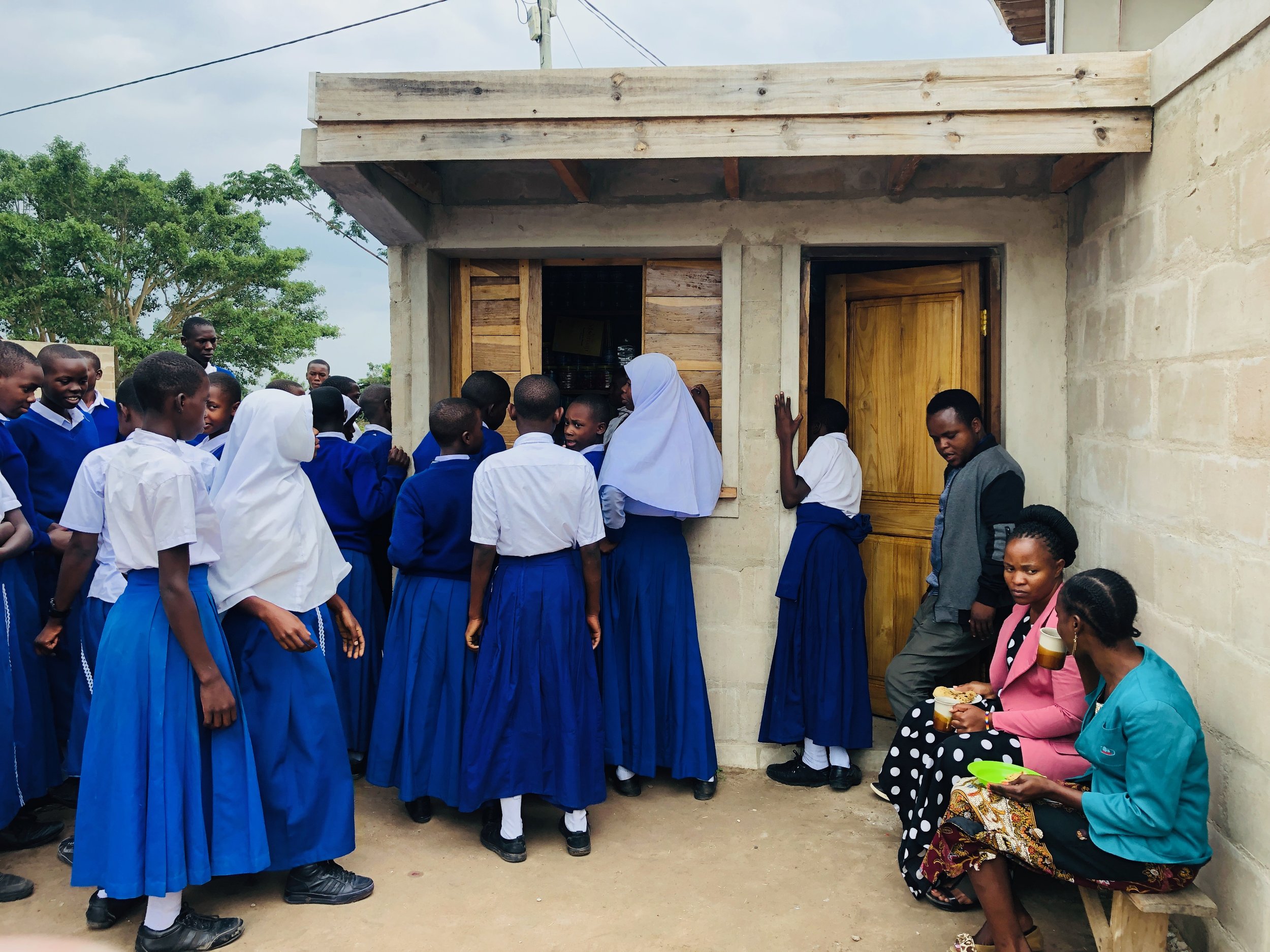EVALUATING THE DORM KIT AT MILEMBE SECONDARY SCHOOL
Benjamin John, Dr. Livin Mosha, Head Teacher Florencia Ndubashe, Pamela Hawkes, Scott Teas, Dr. Godfrey Ayubu, Jefta Kishosha and Aimee Bessire in front of the Dining Hall
We architects talk a lot about the importance of “post-occupancy evaluations,” but rarely get to implement them. The visit to Milembe Secondary School in Tanzania last month, sponsored by donor Africa Schoolhouse, was our first chance to see the completed dormitory complex and talk with users and professionals about how to improve the design.
After the District Council held one of their meetings in the Dining Hall in December, word spread about the new facility. Now, all 50 beds are full with girls from the surrounding Iteja village and Misungwi District and as far away as Butiama to the north and Dar es Salaam to the east—10 hours or more by bus.
The evaluation considered how the design could provide a better model for construction in rural areas, on campuses without power or municipal water and with limited access to materials and construction technology.
What would make the structures easier and more economical to build?
How could the design be more sustainable and durable? Are there new and innovative materials available?
How well does it provide a safe and comfortable learning environment for the girls?
Aimee Bessire, founder of Africa Schoolhouse, convened a variety of experts for a two-day evaluation. Africa Schoolhouse Project Manager Jefta Kishosha, construction manager and engineer Benjamin John and masonry foremen Elisha Jerumiah offered perspectives on construction. Dr. Livin Mosha of Ardhi University in Dar es Salaam, who has advised Africa Schoolhouse since their first project in 2007, was joined by Dr. Godfrey Ayubu, new head of the Institute for Building Research at the University to bring a national perspective. All participated in tours of the buildings and a roundtable session with representative girls, teachers and District officials in the Dining Hall.
The girls particularly appreciate the relatively intimate scale of the dormitory, with just four girls per compartment, as well as the chance to use the Dining Hall for homework before and after school. Other suggestions were wide-ranging, from giving the construction team more project management training and improving supervision of block manufacture to setting aside more space for sports within the compound.
It was rewarding to see how the dorm compound has become a center of the campus, serving tea and snacks from the school store during mid-morning breaks. The girls who are able live in the dorm have consistently scored highest among their classmates in the national exams. Demand continues to grow for more beds and, If fund-raising permits, the second planned dormitory for 50 girls would complete the compound and make the school eligible for national funding.




